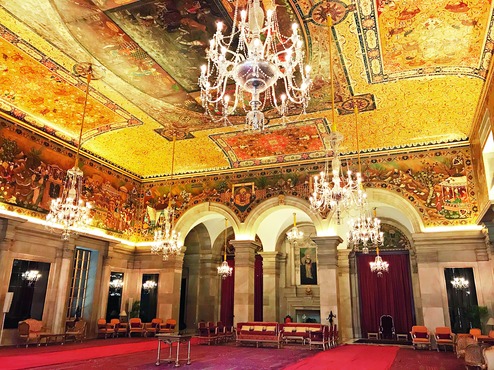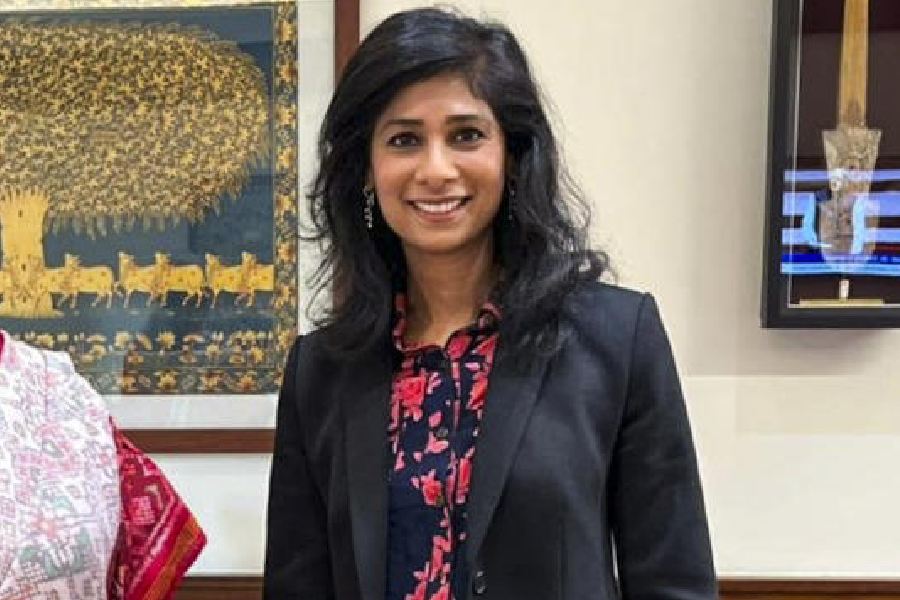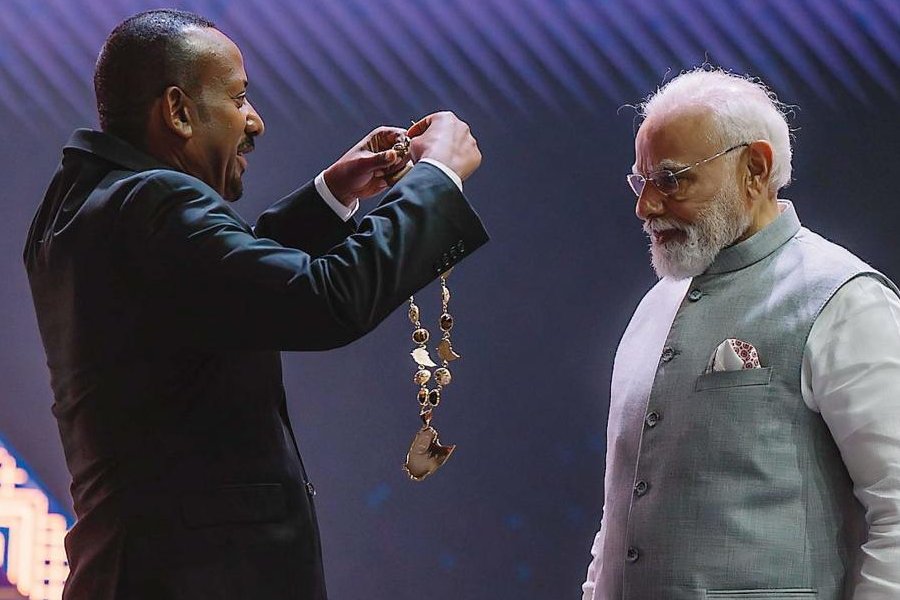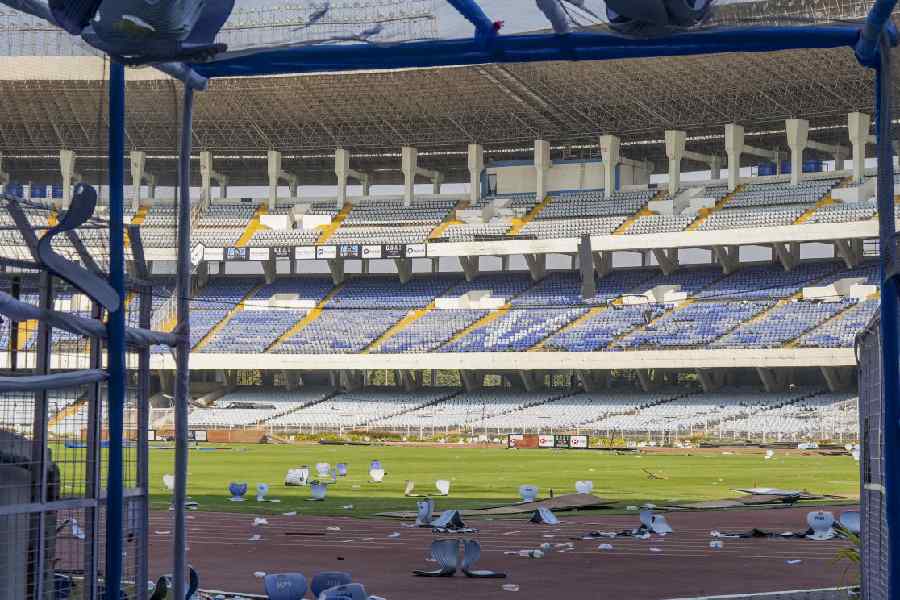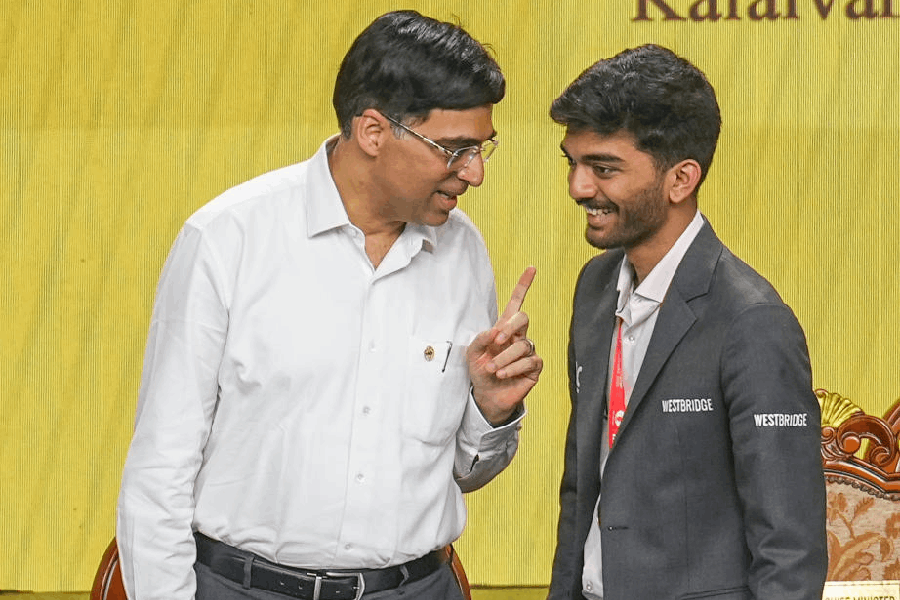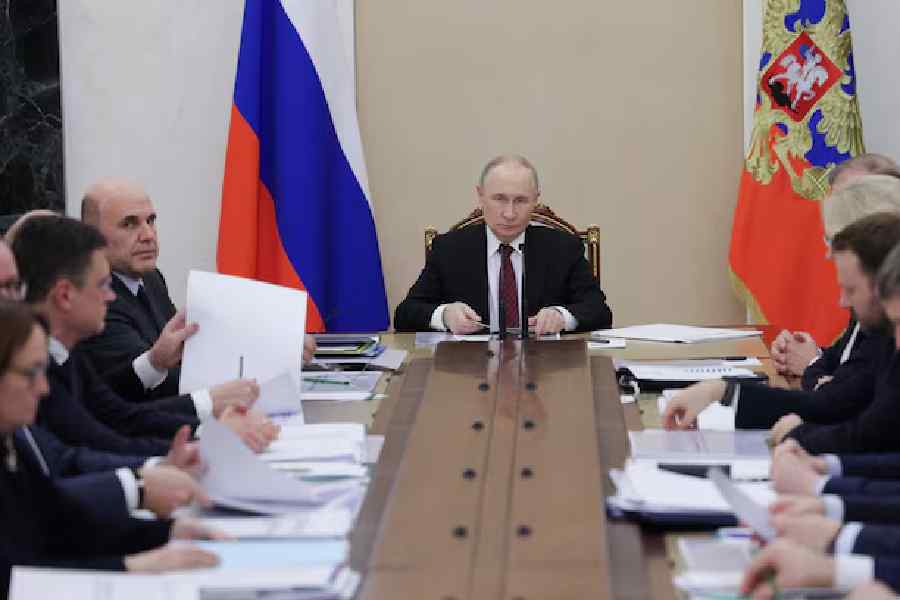

The blue and pink silk curtains that once adorned the tall windows of the Rashtrapati Bhavan slumbered in iron chests, year after year. The life-sized portrait of Lord Irwin, the 30th Viceroy of India, was consigned to some forgotten corner of the official residence of the President of India, along with a couple of dismantled Victorian coaches, ancient zardozi carpets, embellished bedspreads and tasselled comforters. The walking stick of V.V. Giri, the 4th President of India, gathered dust and so did the 11th President A.P.J. Abdul Kalam's veena.
It took a small man to rekindle and unfetter the 340-room, 700-million brick strong, 2,00,000-square-foot Prometheus built by British architect Edwin Landseer Lutyens at the turn of the last century as residence for the imperial viceroys.
"President Pranab Mukherjee has a keen consciousness of history," says one of those who has worked with him at Rashtrapati Bhavan. "He loves to conserve heritage."
Soon after Mukherjee became the 13th President, the olden treasures of the Rashtrapati Bhavan were dusted, restored and granted a proud audience in the Garages - the garage-turned-museum and newest addition to the Rashtrapati Bhavan Museum Complex.
Mukherjee went beyond aesthetics. He took up several social and health projects for the many residents of the President's Estate sprawled atop Delhi's Raisina Hill. He also established a school for special children, launched a digital literacy programme for girls and a special sports training facility for the children living on the estate. He has left behind for his successor, most likely the NDA pick, Ramnath Kovind, a formidable follow-up act.
"He is like the head of a family looking after everything and everyone," says a senior official at the President's Estate. "He has set high standards. Our apprehension is that if the new president is not as proactive, Pranab babu's work will go down the drain."
Chronology notwithstanding, it was Mukherjee and not Pratibha Patil who carried forward Kalam's legacy. Kalam had introduced a herbal and a spiritual garden to the vast Mughal Gardens. Mukherjee added to it more flower varieties - tulips, daffodils, hyacinths... Kalam had modernised the 75-year-old kitchen and renovated the majestic Ashoka Hall. Mukherjee renovated the grand Durbar Hall, the architectural marvel where the swearing-in ceremony of India's first government happened. It was Kalam who earned the title of People's President, and it was Mukherjee who turned the awe-inspiring red-and-cream sandstone edifice with its imposing facade and forecourt into the people's bhavan. He started a 15-day in-residence programme for social innovators, artists and writers, wherein people such as Paresh Maity, Jogen Chowdhury and Amitav Ghosh were invited to stay over and explore the wealth of the President's home. Also for the first time, the gates of the Rashtrapati Bhavan were thrown open to ordinary citizens - thrice a week.
Having been a public man most of his life, Mukherjee had an understanding of people's curiosity about those in high office. He decided to showcase the personal belongings of former presidents in the museum. The collection includes the deep blue suit Kalam wore the day he died; a postcard from Rome sent by R. Venkataraman to his wife, Janaki, in 1982; Neelam Sanjiva Reddy's shaving kit...
One can get a glimpse of Mukherjee's own personal life from photographs on display at the museum. A young Pranab Mukherjee with his arms around wife Suvra, who died two years ago. Another from the 1980s where he is seen smoking a pipe; he gave up his favourite habit a few years ago. Next to it lies a range of smoking pipes, which he had collected from various parts of the world. His first smoking pipe, it seems, was gifted to him by the former Congress president, Debakanta Barooah, says an old-timer. He adds, "He would smoke even in the presence of Indira Gandhi when she was the PM. And the story goes that she had once said that if one were to rap Mukherjee on the head, one might see some smoke come out of it and still never know what was going on in his mind."
A shrewd politician and keen observer, the former finance, defence and external affairs minister is also an avid reader. His favourite writers are Shirshendu Mukhopadhyay and Humayun Ahmed. Out of his love for books, Mukherjee made a conscious effort to promote reading habits among residents of the President's Estate. The Pranab Mukherjee Public Library was inaugurated in 2013. Some of the rare books from the main library were restored - A Catalogue of the Original Works of William Hogarth (1795), A View of the Origin and Conduct of the War with Tippoo Sultan by Alexander Beaston (1800) and 100 volumes of Punch, the iconic British weekly launched in 1841 by Henry Mayhew and engraver Ebenezer Landells.
Today, however, keepers of these rare books and magazines are worried that this restored collection might again fall on bad days if the next president has no interest in books. "Overall, changes will surely happen; but we are not sure if these changes will happen for good or bad. It would have been nice if Mukherjee had got a second term, all his work would have remained undisturbed," says an official who does not want to be identified.
Indeed, many on the President's Estate had speculated a second term for Mukherjee. Some point out that he had tried to appease the BJP. He had even rejected the mercy petition of 1993 Mumbai blast accused, Yakub Memon, and signed his execution order, ignoring the plea of eminent personalities including former party colleague and Congress leader, Mani Shankar Aiyar.
He had built a good rapport with Prime Minister Narendra Modi who often consulted him on foreign policy issues, especially issues related to Russia. In fact, Mukherjee had hailed Modi as one of the "most effective communicators", and even likened him to former prime ministers Jawaharlal Nehru and Indira Gandhi. Modi, in turn, likened Mukherjee to a father figure and guiding light. He named some of the welfare initiatives for the President's Estate - a playschool for children and a community initiative for senior citizens - Sanskar and Samagam, which according to Mukherjee baiters are nomenclatures from the RSS school. He even invited Baba Ramdev for a two-day session at the Rashtrapati Bhavan in February, and later had the RSS chief, Mohan Bhagwat, over for lunch. But if these were efforts at cosying up to the powers to get another stint, they didn't work.
Pranab Mukherjee is moving out of Raisina Hill to a secure bungalow readied for him not far away. Rashtrapati Bhavan awaits its new occupant, and the legacy left behind by Mukherjee, the eye of its new keeper.
High Five
Initiatives Mukherjee launched as President
Books
- The Pranab Mukherjee Public Library is set up for residents of the President’s Estate
- Over 130 damaged rare books of the old library restored
- Six books on the Rashtrapati Bhavan published — Thoughts and Reflections, Indradhanush, Volumes I and II; The Winged Wonders of Rashtrapati Bhavan; Life at Rashtrapati Bhavan; and Rashtrapati Bhavan: From Raj to Swaraj
Art and culture
- A stable and a garage are converted into two museums
- Gifts, personal belongings of former presidents displayed in the museums
- The Rashtrapati Bhavan gardens are revived
- Artefacts of the British period restored and exhibited
- Rock bands of Saarc countries and classical singers invited to perform
- In-residence programme started for writers, artists and social innovators
Technology and innovation
- Innovation exhibition held and innovators felicitated; a week-long Innovation Festival is organised every year
- A 3D theatre showcases a short film on Mahatma Gandhi, while a dedicated visual reality area allows visitors to ‘walk’ with Bapu
Green initiatives
- Eco-conservation project, called Roshni, launched
- 4,000 saplings of different types planted in the President’s Estate; landscaping and refurbishment of greenery done
- Dr Rajendra Prasad Sarvodaya Vidyalaya in the Estate converted into a solar-powered green school
Welfare programmes
- Four ‘S’ initiatives — Sanskriti, Sanskar and Sparsh (for children) and Samagam (for senior citizens) — launched for the residents of the President’s Estate
- Sports Plus Initiative launched for children living on the Estate

